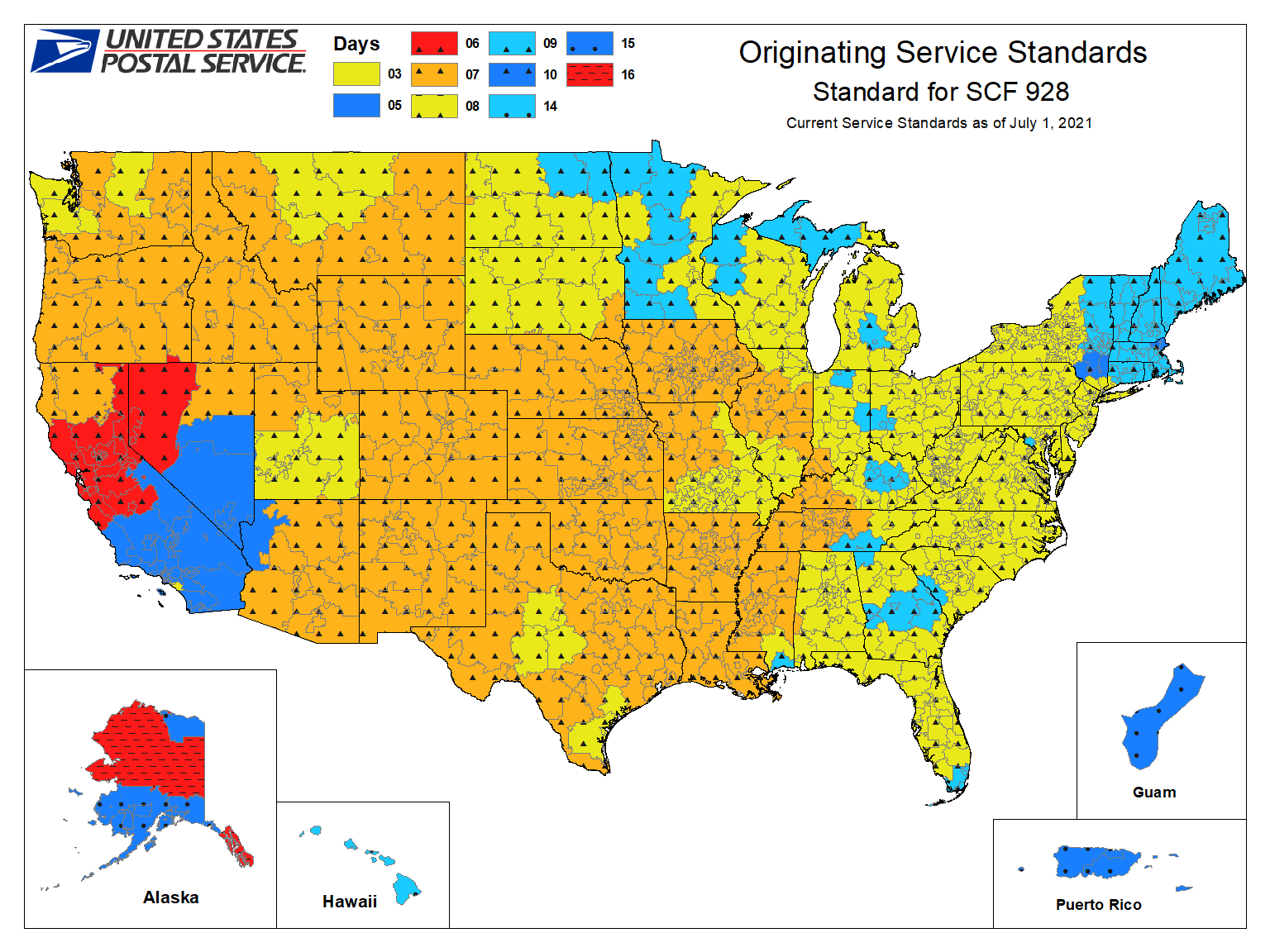Distance and Location
The distance between origination and destination points greatly impacts estimated delivery times. Deliveries within the same city or local area can generally be expected within 1-2 business days using Priority Mail or First-Class services. For areas further away but still within the same state, 2-3 days is a reasonable estimate. Rural or remote locations may see delivery times extend to 3 days or more depending on distance. Referencing official USPS maps can provide a better indication of expected transit times based on origination and destination ZIP Codes.

Day of Mailing
The day an item is mailed also affects estimated delivery. Mail processed on Sunday experiences no movement until the following business day. Additionally, mail entered later in the day may not be processed until the next business day. To maximize efficiency and potentially shave off a day, items should be dropped off directly at the Post Office rather than a street collection box.
Mail Class
Higher priority mail classes like Priority Mail and Priority Mail Express come with faster estimated delivery windows compared to regular First-Class Mail. Priority Mail aims for 1-3 day delivery nationwide while First-Class targets 2-5 days. Referencing the specific service used and its associated delivery standards helps set reasonable expectations.
Processing and Routing
Behind the scenes mail movement involves collection, processing at regional facilities, and transportation between sorting plants which all factor into transit timelines. Items mailed within major metro areas can often be processed and routed overnight but more remote locations may require an additional day or two of transportation before sorting even begins. Accidents or unusual volumes can also cause occasional delays beyond posted estimates.
Address Accuracy
A key factor out of a mailer’s control is how accurately and completely the address is written. Mail processing equipment relies on clearaddresses formatted per USPS standards to sort items efficiently. Illegible, missing, or incorrect information can result in misrouting and extension of the delivery timeline if manual intervention is required. Senders should double check addresses are complete and legible.
Exceptions and Anomalies
While estimates provide a general guideline, exceptions due to unusual circumstances or simple errors may cause deliveries to exceed the posted timeframes. Complex addresses, missing keys like apartment numbers, illegible handwriting, and random misreads during mechanized processing can all lead to delays. Senders need to accept potential outliers and have realistic expectations around estimated delivery periods.
Tracking and Expectations
Senders can use free tools like Informed Delivery and online tracking to monitor mail in transit. However, estimates are just projections—not guarantees. Factoring in weekends, distances, proper preparation and the inherent variability in a vast postal network, calibrating expectations to the norms outlined by delivery standards serves senders and receivers best. With accurate information and reasonable timelines in mind, the mailing process runs smoother.
 (1).jpg)
 A Visitor's Guide to Exploring the Beautiful City of Izmir, Turkey
A Visitor's Guide to Exploring the Beautiful City of Izmir, Turkey